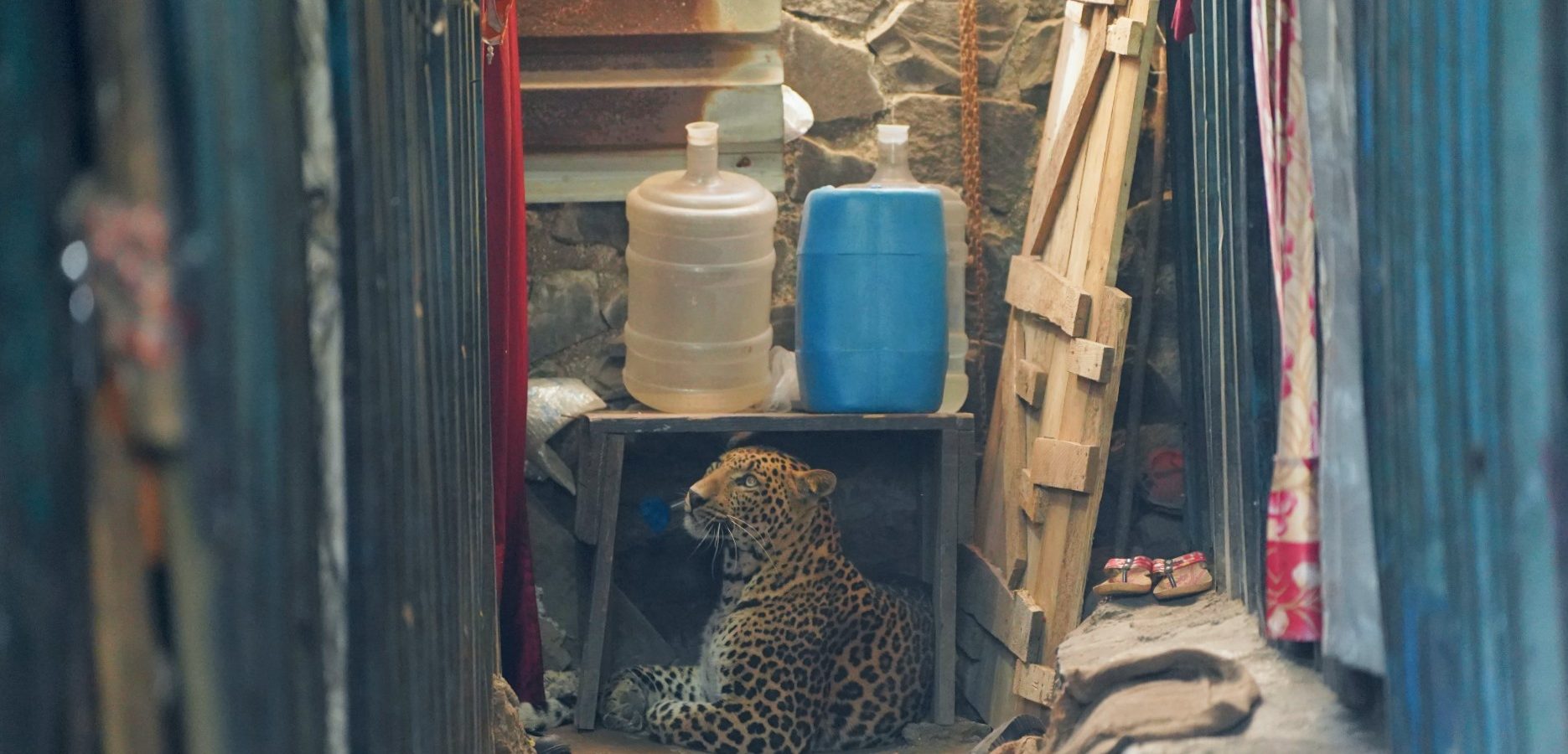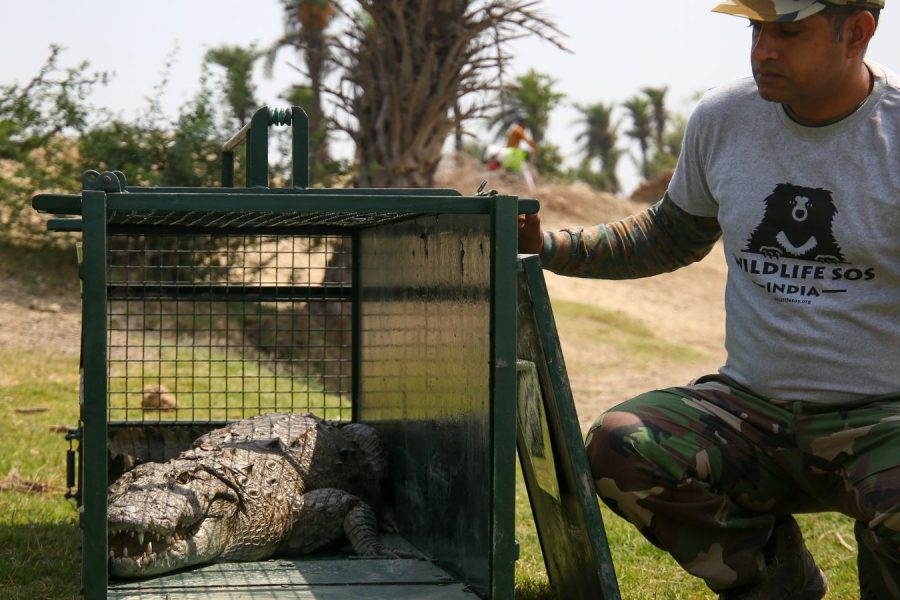Ever wondered what to do if a leopard entered your house? Working to conserve leopards for several years now, Wildlife SOS has encountered numerous instances where leopards have ventured inside people’s residences. However, it is not so much about the leopard entering our home, but us humans entering the leopards’ home by encroaching their habitat.
Maharashtra’s landscape is rife with such instances, caused mostly due to rampant infrastructural development. The most exemplary case is the shrinking Sanjay Gandhi National Park, coexisting with the most densely populated Indian city, Mumbai. Here, leopards have been captured on CCTV cameras roaming through the city in the night. Not just Maharashtra, but rural and semi-rural parts of Uttar Pradesh have also faced cases of leopards venturing inside people’s homes.
Understanding Stray Leopard Behaviour
The most natural reaction to unexpectedly spotting a leopard is that of fear and panic. But it should be kept in mind that frenzy is the enemy in such situations. These felines are strong hunters, and apex predators in certain ecosystems. There have been cases where human beings have tried to chase away leopards in a state of worry.
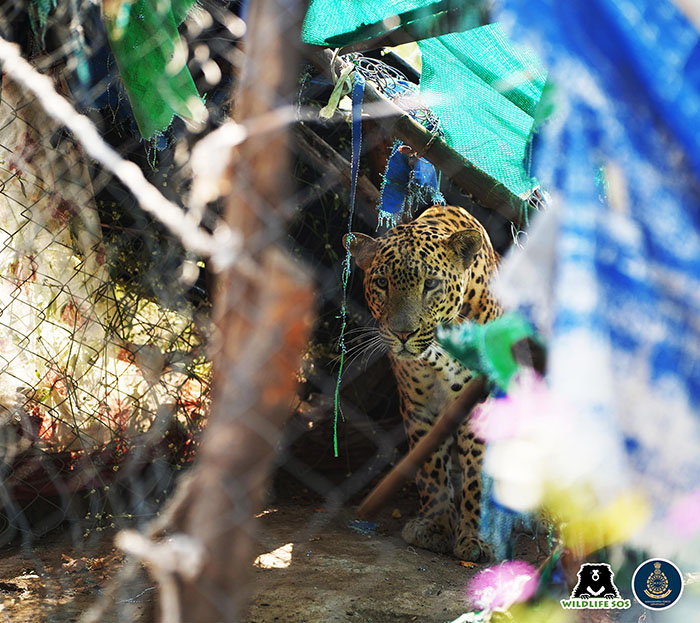
However, doing so can be counterproductive as the leopard’s defensive instincts will kick in and it will try to save itself. In such cases, people present nearby can end up with injury or grave wounds, as leopards are biologically strong enough to overpower humans. It is usually the leopards that suffer in situations like these for simply trying to protect themselves from threat.
If a leopard attacks a human to defend itself, it is often misinterpreted as an intentional assault and the animal is categorised as ‘dangerous’. This leads to the leopard facing the risk of being attacked or even killed by a large group. Such tragic circumstances occur because of widespread ignorance about leopard ethology.
Straying from their Habitat
Discussing a few real incidents of leopards venturing inside human-dominated areas probably might lay out a better understanding of the crisis. In October 2022, a female leopard was rescued by Wildlife SOS from a house in Helgav village located in the Satara district of Maharashtra. The leopard was estimated to be around 10-12 years old and had entered the house when the family was away for Durga Puja idol immersion.
In another episode, Wildlife SOS rescued an approximately 6-year-old male leopard from a town named Chakan when he got stranded in a slum settlement. The big cat took shelter in a narrow passageway and by the time the rescue team arrived, a large crowd had gathered at the location. The local police and forest officers sprang into action to initiate crowd control while the Wildlife SOS team formulated a rescue strategy, following which the leopard was extricated safely in a 2-hour-long operation.
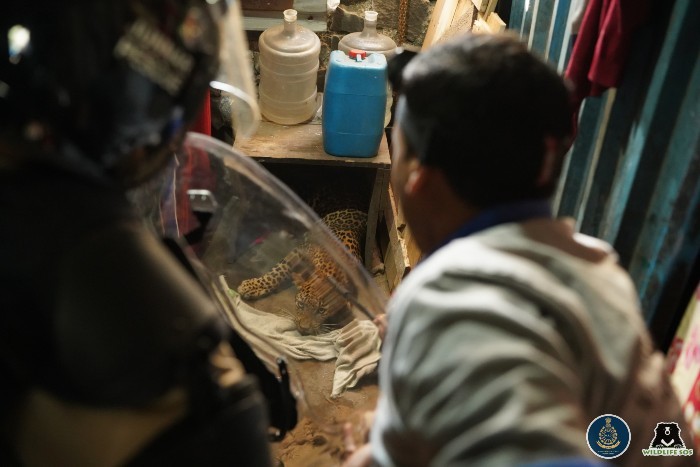
This year in January, a third incident involved a leopard wandering into a house in Jawan town of Aligarh district in Uttar Pradesh. It was a unique situation as the family was stuck inside their house with the leopard. In an operation that lasted a total of 6 hours, the Wildlife SOS rescue team and the forest department made arrangements for the family to exit the house and safely rescue the leopard.
Wildlife SOS Handling Rescue Situations
It is certainly a cause of concern when an apex predator becomes a guest at your home! Wildlife SOS has tactfully resolved such cases, having rescued leopards in the past from incidents of them straying into human inhabited areas. These valuable experiences gained from past rescues have helped us formulate certain steps that need to be completed before carrying out the rescues.
The first step includes pacifying the gathered crowd. Crowd control and management is carried out effectively with the help of forest department officers. The second step is to make sure that the team is well-equipped with rescue items such as safety nets, trap cage and protective gear. This is followed by the readiness of expert veterinarians with a tranquiliser dart to sedate the leopard.
There are cases when residents have to take immediate action by thinking on their feet in order to deal with such an emergency. The family that spotted the leopard inside their home at Helgav village managed to lock the door from the outside, and immediately informed the forest department. For the family in Aligarh, they locked themselves inside the kitchen as others in the town called for professional help. As soon as the rescue team arrived, it first cut the iron grill over the kitchen window so that the family could crawl out through the space. After spotting the leopard, the vet carefully carried out tranquilisation through a hole drilled in the wall.

These instances give us an idea about how to react when a leopard enters a densely populated residential area. While it is best to not engage with the big cat, we have to acknowledge that the animal is possibly more stressed when surrounded by a huge group of people. Imagine if you were encircled by a large group of animals in a habitat that is not your own!
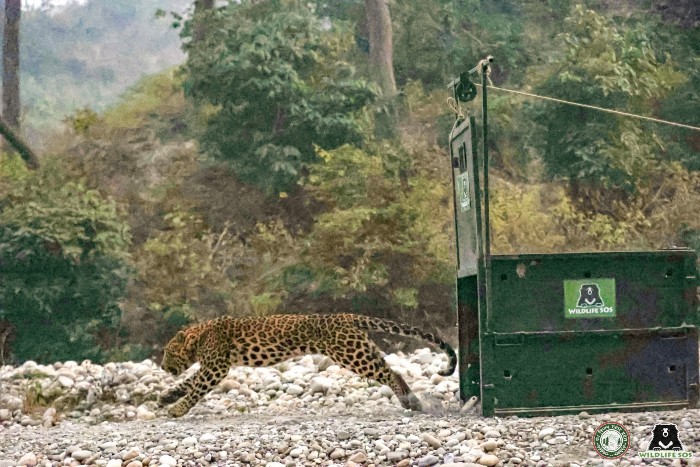
We need to adopt empathy in such situations and not act in a manner that would harm the animal. Wildlife SOS has been involved in the conservation of these majestic cats for over 15 years. Even if you are someone who has not faced a leopard straying incident, you can support us in resolving similar situations that take place by donating to Wildlife SOS. These funds will not only better equip us in carrying out challenging rescues, but also educate the people who are liable to find themselves in the middle of these circumstances.

